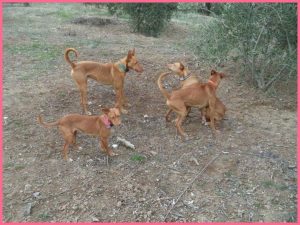Off leash dog parks

Photo: Scott Hollingsworth
Off leash dog parks can be great places to let our dogs run, and run with their own kind.The biggest thing is to KNOW YOUR DOG. Dog parks are places of high excitement and arousal, and they are not for every dog. If your dog might be overwhelmed or can be a massive jerk, consider carefully.
Set up for success with some good, proofed, base commands – especially around impulse control and recall. Socialisation (not just exposure) to other dogs should be done in advance and not be the purpose of the park visit.
Assess each trip – when you get there assess what other dogs are there, how many there are, how they are playing. Walk the fence line to assess again. Your entry to the park will change the dynamic. Advocate for your dog and be prepared to leave if you need to, at any point.
Once inside:
Be mostly hands off, always eyes on. For the most part, dogs will work out things for themselves. Always watch though – and this is where knowing your dog is crucial.Be prepared to intervene when you’re uncomfortable, or when another owner is uncomfortable. Excitement levels can quickly escalate, and an uncomfortable owner may inadvertently contribute to things.
Keep the leash on you. Then it’s ready to help you intervene / divert focus if you need to. It also means you’re not inadvertently signalling about home time by going to a certain place, and you can keep your dog guessing with the leash going on/off.
Move around the park. Not only does this keep you moving and possibly closer if you need to intervene, it makes you more interesting, and your dog is more likely to ‘check in’ with you. Standing or sitting in one place is boring. Remember to reward those check ins heavily!
Make use of any equipment. Parks with agility equipment can give great diversion and are a great change of pace.
Be mindful of time. Being in an excited state for too long can be problematic. The environment will also contribute, including which dogs, weather, any toys present, etc, and may shorten or lengthen your dog’s tolerance levels.
Be self aware. Your body language, nerves, voice, hat and/or sunglasses may be triggers for some dogs, or at least can contribute to an escalation. Be strong not tense. Breathe.
If something happens don’t panic. Attend to the dog/s first and foremost, and leave the park if necessary. Screaming at each other as owners solves nothing. If necessary, document your version of events and report the event to council, who can legally investigate. If your dog is the aggressor, take responsibility for it.
Check out these previous tips that might be useful:
Call me, I can help.


